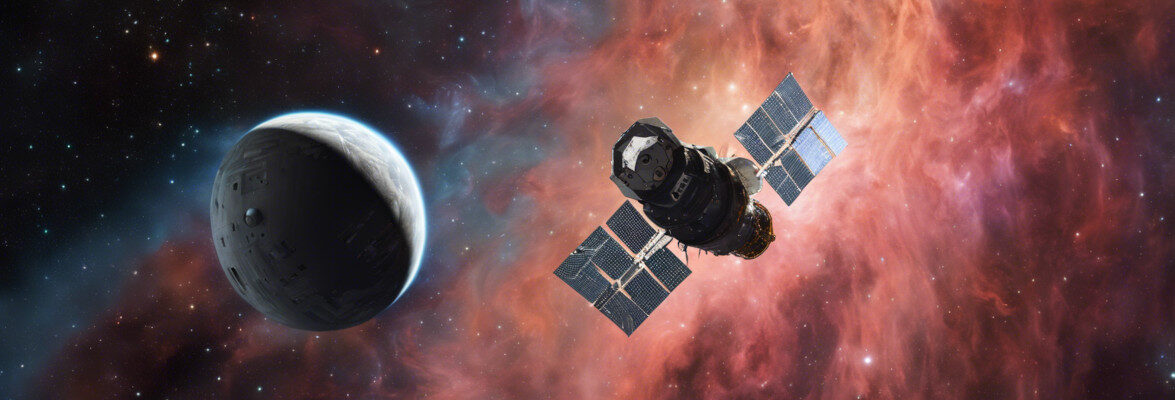
An article published in the journal “Nature Communications” reports the discovery of uracil, one of the bases of RNA, and niacin, i.e. vitamin B3, in the samples of asteroid Ryugu brought back to Earth by the Japanese Hayabusa 2 space probe. A team of researchers led by Yasuhiro Oba of Japan’s Hokkaido University developed an analytical technique to identify compounds in concentrations between parts per billion and parts per trillion to analyze just over 5 grams of samples.
It’s not the first time that such complex compounds connected to life have been discovered in meteorites but previously they were on Earth and there was a danger of environmental contamination while the samples from asteroid Ryugu were taken in space and handled with extreme caution on Earth. The image (NASA Goddard/JAXA/Dan Gallagher) shows Ryugu, the Hayabusa 2 space probe, and the molecules of uracil and vitamin B3.
The presence of even highly-complex organic materials in asteroids and comets has been known for some time and represents a further reason for interest. The possibility that the building blocks of life came from space is intriguing and scientists of various disciplines are trying to understand what levels of complexity the compounds that form in those space environments can reach.
Another team also led by Yasuhiro Oba, an associate professor at Hokkaido University, had already examined the Murchison meteorite and found many organic compounds, including the bases of DNA and RNA. Those findings were reported in an article also published in “Nature Communications”. Those analyzes were conducted with a technique based on the use of high-performance liquid chromatography coupled with high-resolution mass spectrometry. This allows identifying compounds with extremely small concentrations between parts per billion and parts per trillion.
There are many studies of the Murchison meteorite and other meteorites that fell to Earth and have become very sophisticated in recent years. This made it possible to find many complex organic compounds. However, these were meteorites that got exposed to the Earth’s environment for a very long time. In those conditions, it’s impossible to rule out contamination with certainty. The situation is quite different when the samples were taken in space.
The mission of the Hayabusa 2 space probe was completed in December 2020 by returning to Earth just over 5 grams of samples taken on asteroid Ryugu and sealed in special containers. They were handled with all the caution needed to keep them pristine, so there’s no doubt that the compounds inside them came from Ryugu.
The analysis of the pristine samples from asteroid Ryugu showed the presence of a remarkable variety of organic molecules, including amino acids, amines, and carboxylic acids, which are found in proteins and metabolic processes, respectively. Two samples also contain uracil, in the range of 6 to 32 parts per billion, and vitamin B3, in the range of 49 to 99 parts per billion. According to the researchers, the difference in concentration in the two samples, collected in different areas of Ryugu, is probably due to the different exposure to the space environment.
An interesting consideration concerns the possible formation of nitrogen-containing compounds starting from simpler molecules such as ammonia, formaldehyde, and hydrogen cyanide. These are molecules not found in the samples but present in comets’ ice and asteroid Ryugu might have formed from the remains of a comet.
This study removes the doubts that even in asteroids and comets there can be complex building blocks of life such as nucleic acid bases, therefore it’s important for astrobiology studies. It strengthens the hypothesis that life on Earth might have formed from “seeds” that arrived from asteroids and comets. September 24, 2023, is the date scheduled by NASA for the release of a container carried by its OSIRIS-REx space probe that contains samples from asteroid Bennu. Their analysis and comparison of the content with Ryugu’s become even more interesting.

